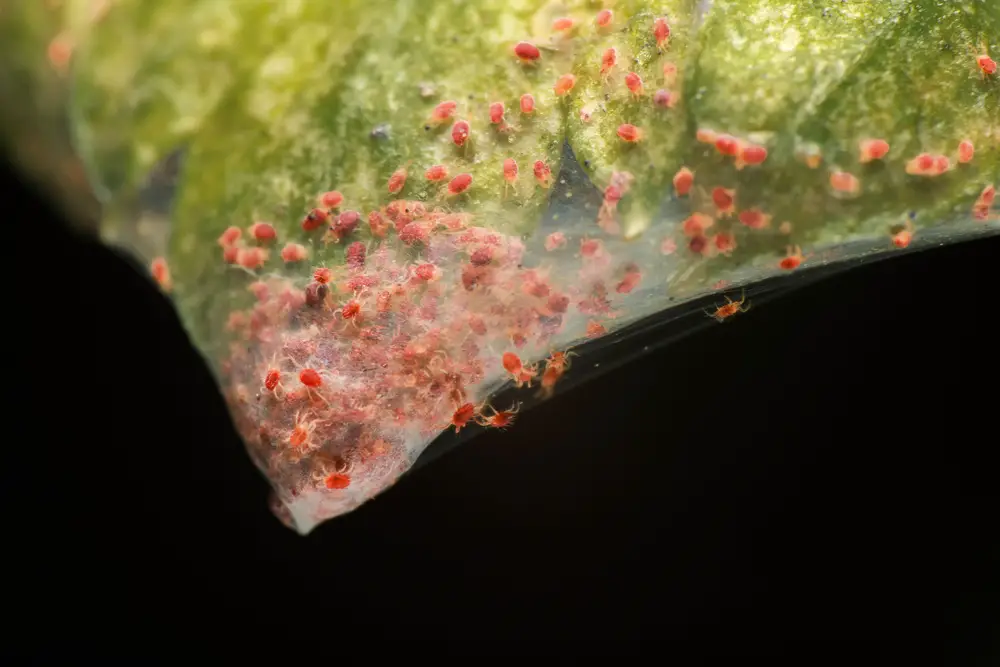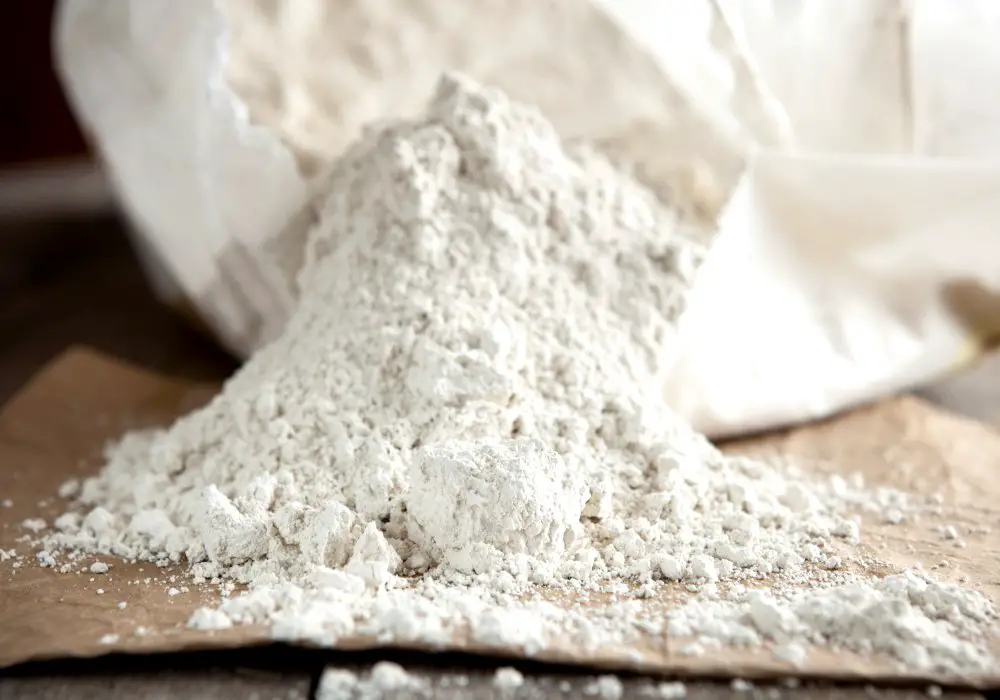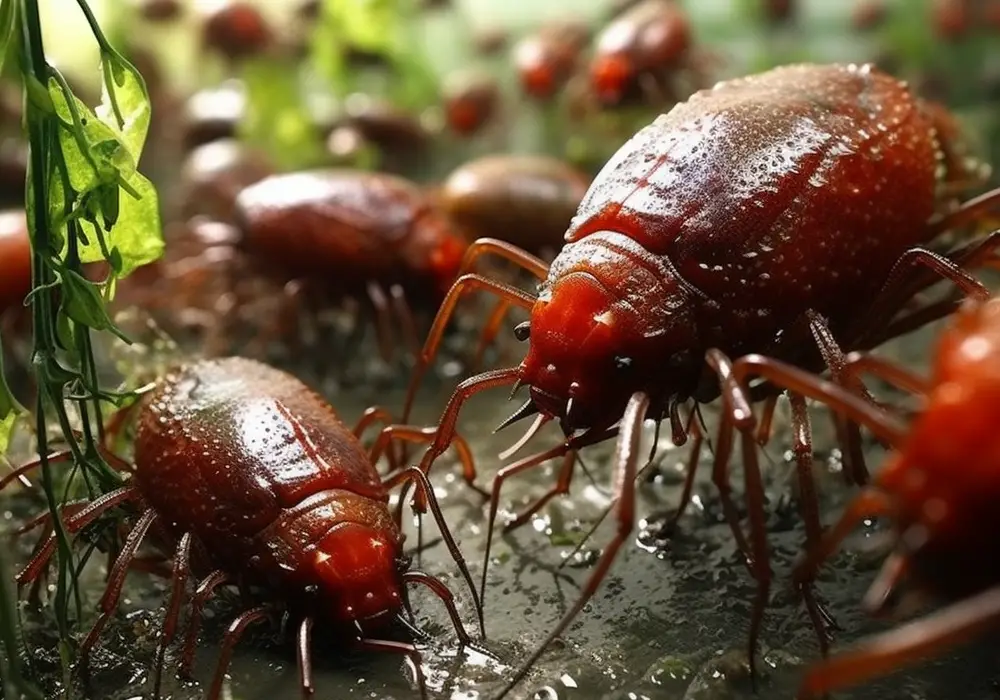Harvest mites, also known as chiggers, are tiny red mites that are commonly found in grassy areas during the summer and fall months.
These mites are known for their ability to attach themselves to humans and animals, causing itchy and uncomfortable bites.
Quick Answer:
Harvest mites, or chiggers, are primarily outdoor pests. While they might enter homes on humans or pets, they don’t breed or establish infestations indoors. Their larvae can bite and cause itchiness, but they don’t thrive or persist in indoor settings.
Harvest mites are typically found in grassy and wooded areas, where they attach themselves to animals and humans as they pass by. Once attached, the mites feed on their host’s skin cells, causing red, itchy bumps.
Understanding Harvest Mites
Harvest mites, also known as chiggers, belong to the family Trombiculidae, which is a type of mite. These arachnids are found in grassy and wooded areas, where they feed on animals, including humans.
Harvest mites are most common in the summer and fall months, and they are known for causing skin irritation and itching.
Harvest mites are tiny, measuring only about 1/100th of an inch in size. They are red or orange in color and have six legs. Harvest mites go through several stages of development, starting as eggs and progressing to larvae, nymphs, and adults.
When a harvest mite larva finds a host, it attaches itself to the skin and injects digestive enzymes into the skin cells. The enzymes break down the skin cells, allowing the harvest mite to feed on the resulting liquid. The feeding process can cause intense itching and irritation, which can last for several days.
Harvest mites are not known to live inside homes, as they require a specific habitat to survive. However, they can be carried into homes on clothing or pets, and they may find a suitable environment to lay eggs.
To prevent harvest mites from entering the home, it is recommended to avoid walking in grassy or wooded areas, wear protective clothing, and check pets for any signs of infestation.
Life Cycle of Harvest Mites

Harvest mites, also known as chiggers, are tiny arachnids that are typically found in grassy areas. The life cycle of harvest mites consists of four stages: egg, larva, nymph, and adult.
The eggs of harvest mites are laid in the soil during the late summer or early fall. These eggs hatch into larvae, which are the stage of the harvest mite that typically causes problems for humans.
The larvae are very small, measuring only about 0.15 mm in length. They are bright red in color and have six legs.
The larvae of harvest mites are parasitic and feed on the blood of a variety of hosts, including humans, dogs, cats, and rodents. After feeding, the larvae drop off their host and molt into the nymph stage.
The nymphs are larger than the larvae and have eight legs.
The nymphs of harvest mites continue to feed on the blood of their hosts. After feeding, they drop off and molt into the adult stage. The adults are also parasitic, but they do not feed on blood. Instead, they feed on plant material and other small insects.
The life cycle of harvest mites typically takes about three months to complete. The larvae are the most problematic stage for humans, as their bites can cause intense itching and discomfort.
Harvest Mites and Their Hosts
Harvest mites, also known as chiggers, are tiny arachnids that belong to the family Trombiculidae.
They are commonly found in grassy areas and are known to attach themselves to various hosts, including pets, birds, rodents, rats, mice, and other warm-blooded animals.
Harvest mites are most active during the warmer months of the year and are more commonly found in rural areas. They are known to attach themselves to the skin of their hosts and feed on their blood. The bites of harvest mites can cause intense itching and irritation, which can lead to secondary infections if left untreated.
Pets, such as dogs and cats, are common hosts for harvest mites. They can also be found on birds, rodents, rats, and mice.
In some cases, humans can also become hosts for harvest mites, especially if they spend time in grassy areas or come into contact with infested pets.
Regular grooming and inspection of pets can help detect and prevent infestations. Additionally, keeping grassy areas mowed and avoiding contact with tall grass can also help reduce the risk of exposure to harvest mites.
Harvest Mites in the Environment
Harvest mites, also known as chiggers, are tiny arachnids that are found in many different environments.
They are commonly found in grassy areas, forests, and fields where they can attach themselves to animals and humans. However, they can also be found in other areas such as vegetation, plants, bushes, and moist areas.
Harvest mites are most active during the late summer and early fall months when the weather is warm and humid. They are attracted to areas with high levels of moisture, such as damp soil, leaf litter, and other organic matter.
They are also commonly found in areas with tall grass or weeds, as these provide the perfect hiding place for these tiny pests.
While harvest mites are commonly found in outdoor environments, they can also be found inside homes and other buildings. They can easily be carried inside on clothing, shoes, and pets. Once inside, they can hide in carpets, furniture, and other areas where they can easily attach themselves to humans and pets.
To prevent harvest mites from entering your home, it is important to keep your property well-maintained. This includes regularly mowing your lawn, trimming bushes and shrubs, and removing any standing water or other sources of moisture.
It is also important to keep your home clean and free of clutter, as this can provide hiding places for these tiny pests.
If you do find harvest mites in your home, it is important to take immediate action to eliminate them. This may involve vacuuming carpets and furniture, washing bedding and clothing, and using insecticides or other pest control methods to kill any remaining mites.
Harvest Mites Infestation in Homes
Harvest mites are tiny arachnids that are commonly found in grassy and wooded areas. They are also known as chiggers and red bugs.
While they usually do not infest homes, they can occasionally find their way indoors and cause problems for homeowners.
Mites are not parasites, but they can cause discomfort and irritation to humans and pets. They feed on the skin cells of their hosts, and their bites can cause red, itchy welts.
Infestations of harvest mites in homes are rare, but they can occur if there is a large population of mites in the surrounding area. Mites can enter homes through open windows and doors or on the clothing and shoes of people and pets.
House mouse mites and rodent mites are more common in homes than harvest mites. These mites are often found in areas where rodents live, such as attics, basements, and crawl spaces. They can also infest furniture and bedding.
To prevent mite infestations in the home, it is important to keep the home clean and free of clutter. Regular vacuuming and dusting can help remove any mites that may have entered the home.
Sealing any cracks or gaps in the home’s exterior can also help prevent mites from entering.
Identifying Harvest Mite Bites
Harvest mite bites are usually found on the lower parts of the body, such as ankles, legs, and feet. They are small, red, and itchy. The bites may also appear as welts or skin rash. In some cases, they can cause papules or lesions on the skin.
The bites are caused by the larvae of the harvest mite, which is also known as the chigger. The larvae are very small and can be difficult to see with the naked eye. They are usually found in grassy or wooded areas and can attach themselves to humans and animals.
The bites of the harvest mite can be very itchy and uncomfortable. They may also become infected if scratched too much. It is important to avoid scratching the bites and to keep the area clean and dry.
If you suspect that you have been bitten by a harvest mite, it is important to seek medical attention.
Your doctor can prescribe medication to help relieve the itching and discomfort. They may also recommend using an over-the-counter cream or lotion to help soothe the skin.
Health Implications of Harvest Mites
Harvest mites can cause a range of health problems, particularly in individuals who are allergic to their bites.
The bites of harvest mites can cause intense itching and discomfort, leading to scratching and rubbing of the affected area. This can result in secondary infections, particularly if the skin is broken.
In addition to causing dermatitis, harvest mites can transmit a range of diseases, including Lyme disease and other tick-borne illnesses.
While the risk of disease transmission is relatively low, individuals who are bitten by harvest mites should be vigilant for any signs of illness and seek medical attention if necessary.
Some individuals may be more susceptible to allergic reactions to harvest mite bites than others. Those with a history of asthma or other respiratory conditions may be at higher risk of asthma attacks triggered by exposure to harvest mites.
In severe cases, anaphylaxis can occur, which is a life-threatening allergic reaction that requires immediate medical attention.
Preventing exposure to harvest mites is the best way to avoid these health problems. Individuals should wear protective clothing when working or playing in areas where harvest mites are known to be present.
They should also take care to avoid contact with areas where harvest mites are likely to be found, such as tall grasses and wooded areas.
Preventing and Treating Harvest Mite Infestations
Harvest mites are a type of parasitic mite that commonly infest animals, including dogs, cats, and rodents. However, they can also infest humans and cause skin irritation and itching.
Prevention
The best way to prevent harvest mite infestations is to avoid areas where they are known to be present, such as grassy fields, wooded areas, and gardens.
If you must be in these areas, wear protective clothing, such as long pants and sleeves, to prevent the mites from attaching to your skin. You can also use insect repellent to deter them.
Another effective way to prevent harvest mite infestations is to keep your home clean and free of clutter.
This will help to reduce the number of hiding places for mites and other pests. Use a dehumidifier to reduce humidity levels, as mites thrive in moist environments.
Sealing entry points, such as cracks and gaps in walls and doors, can also help to prevent harvest mites from entering your home.
Treatment

If you suspect that you have a harvest mite infestation, there are several steps you can take to treat it.
The first step is to remove any clothing or bedding that may be infested with mites and wash it in hot water. This will kill any mites that may be present.
Taking a shower with soap and water can also help to remove mites from your skin. Use a brush to gently scrub your skin and remove any mites that may be attached.
Insecticides can also be effective in treating harvest mite infestations. However, it is important to use them according to the instructions on the label and to avoid using them on your skin.
Diatomaceous earth is a natural substance that can be used to control harvest mites. It works by dehydrating the mites and causing them to die. Apply it to areas where mites are present, such as carpets and bedding.
- OMRI Listed – Listed with the Organic Minerals Research Institute, a non-profit organization that reviews products against organic standards.
- Natural Product – Composed of 10lbs of 100% ground freshwater diatomaceous earth with absolutely no additives or fillers.
- Vegan-Keto-Gluten Free
If your symptoms are severe or do not improve with home treatment, seek medical treatment from a healthcare professional. They may prescribe medication to help alleviate your symptoms.
Overall, by taking preventive measures and treating infestations promptly, you can effectively control harvest mite infestations and avoid the discomfort and irritation they can cause.
Harvest Mites and Other Mite Species

Harvest mites, also known as chiggers, are a type of mite that is commonly found in grassy areas during the summer and fall months. They are not known to infest homes or buildings, as they prefer to live in outdoor environments.
However, there are many other types of mites that can be found in homes and buildings.
Dust mites, for example, are a common type of mite that can be found in homes. They feed on dead skin cells and can cause allergies in some people.
Bird mites, which are often found in bird nests or on birds themselves, can also infest homes if they are brought inside on clothing or other items.
Scabies mites are another type of mite that can infest homes. They are responsible for the skin condition known as scabies, which is characterized by intense itching and a rash.
Chicken mites and fowl mites are also common in poultry houses and can infest homes if they are brought inside on clothing or other items.
Red bugs, also known as chiggers in their larval stage, are similar to harvest mites and can be found in grassy areas.
Neotrombicula autumnalis, also known as the autumn harvest mite, is another type of mite that is commonly found in grassy areas during the fall months.
Straw itch mites are another type of mite that can infest homes. They are often found in straw, hay, and other plant materials.
Demodex mites are a type of mite that live in the hair follicles of humans and other animals. They are usually harmless but can cause skin irritation in some people.
Tropical rat mites are a type of mite that is commonly found in homes infested with rodents. They can bite humans and cause skin irritation. Grain mites are another type of mite that can infest homes, especially in areas where food is stored.
Geographical Distribution of Harvest Mites

Harvest mites are found all over the world, but they are most commonly found in temperate regions.
They prefer warm and humid climates and are most active in the late summer and early fall. Harvest mites are found in many parts of North America, including the United States and Canada.
In the United States, harvest mites are found in many states, including Texas, Florida, and California.
They are also found in the Midwest, including Illinois, Missouri, and Ohio. In Canada, harvest mites are found in many provinces, including Ontario and Quebec.
Harvest mites are also found in many parts of Europe, including the United Kingdom, France, and Germany. They are also found in Asia, including Japan, China, and Korea.
Harvest mites are less commonly found in Africa and South America. They are also not found in the Arctic or Antarctic regions.



